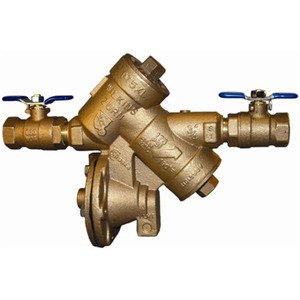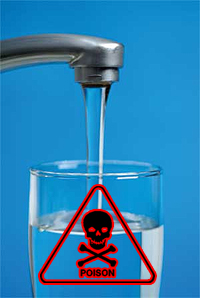
Top 4 things you should know about backflow preventers
If you’re a plumber, irrigation contractor, landscaper, or commercial property manager there’s a good chance you’ve dealt with a backflow preventer before. However, if you’re just getting started, or you’re an experienced tradesman that’s taking on a commercial or residential backflow preventer job for the first time, there’s 4 things you should know before getting started.
1.) What is a backflow preventer?
First we’ll start with a few plumbing and irrigation basics. A backflow preventer is a plumbing valve that is required on irrigation systems to eliminate the potential of contaminated water from being sucked back into a property’s potable (“drinking”) water and/or a city’s main water system. Normally, we think of pressure forcing the water “out” of an irrigation system through sprinklers, drip systems, and bubblers to water grass, trees, plants, bushes and other landscape features.
Under normal circumstances, this doesn’t seem like a problem, but irrigation systems (and other plumbing systems) can cause back pressure once they’ve forced water out of the system. This can be an issue because weed killers and herbicides that are commonly used to help maintain landscapes, can actually drain through the soil and enter the irrigation system pipes.
It’s common practice, especially on commercial properties that use professional landscape maintenance services, to use weed killers and herbicides such as pre-emergent to protect and maintain the long-term health of the commercial property’s landscape. For anyone who has ever handled these chemicals, you know they are very harmful to humans and unfortunately, they can enter into the irrigation system as they drain through the soil.
2.) What causes “back pressure”?
 Back pressure or “backflow” is the opposite effect of forcing water out of an irrigation system. As the outgoing water is forced out of the system, it creates an air pocket or air gap where the water used to be, which in turn causes the system to have a vacuum-like effect that pulls water back into the system. Irrigation systems are typically connected to the same potable water system that the property uses, and often times can be connected to the city’s water main. If harmful chemicals have drained through the soil and entered the underground sprinkler system or irrigation pipes, they can get pulled back into the properties’ water system, and could be consumed by anyone who works or lives on the property as they drink water.
Back pressure or “backflow” is the opposite effect of forcing water out of an irrigation system. As the outgoing water is forced out of the system, it creates an air pocket or air gap where the water used to be, which in turn causes the system to have a vacuum-like effect that pulls water back into the system. Irrigation systems are typically connected to the same potable water system that the property uses, and often times can be connected to the city’s water main. If harmful chemicals have drained through the soil and entered the underground sprinkler system or irrigation pipes, they can get pulled back into the properties’ water system, and could be consumed by anyone who works or lives on the property as they drink water.
If connected to a city water main, the backflow preventer also protects harmful chemicals from entering the city’s water system and spreading further contamination. This type of contamination is known as a category 4, “significant” water contamination hazard. Just imagine a home, or busy office full of people and the water that’s being used to make coffee has traces of weed killer and herbicides in it. This type of situation could be disastrous.
3.) Eliminating back pressure helps prevent water contamination
Therefore, as a measure of safety, and as a requirement of most city enforcement codes, a backflow preventer must be installed to the irrigation system to prevent any occurrences of potable water contamination. Click here for a great example of city code requirements and their active backflow prevention program. Tip: Always check your city’s code requirements when taking on a backflow preventer job.
4.) Keep the backflow preventer protected from theft and vandalism
Backflow preventers aren’t cheap as they typically contain copper and brass to ensure high quality and long life. Since we’re talking about health safety issues and water contamination prevention, they need to be made well. These valuable metals however, have become a common target of thieves and vandals.
Depending on the city you live in, you may have noticed protective cages covering a large valve (the backflow preventer) on most commercial properties. These backflow cages are highly encouraged by cities as a measure to not only help eliminate theft, but to help uphold public water safety standards.
Conclusion
So before you take on that next irrigation job, remember you can do your part to help keep people, commercial properties, and city water systems safe from harmful contaminants by using a backflow preventer, and theft-resistant backflow cage. Ok, now you’re ready to start thinking about your install. Good luck!

